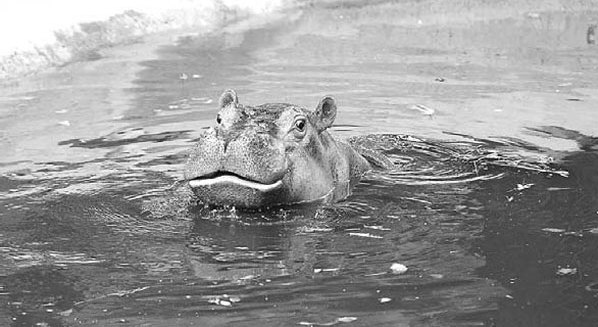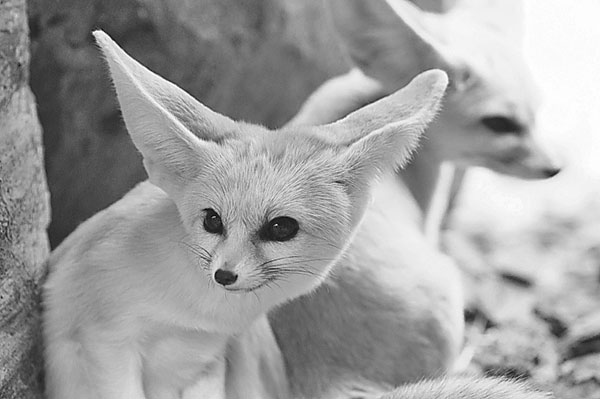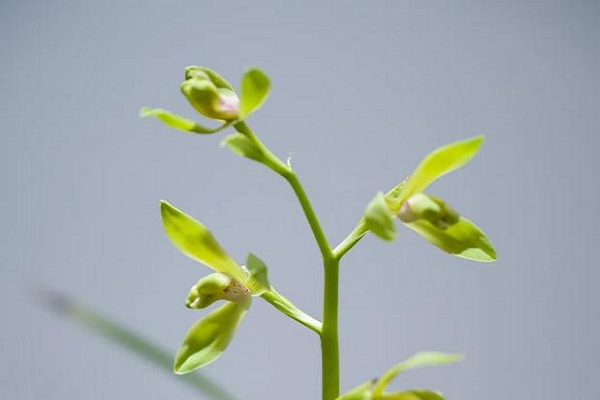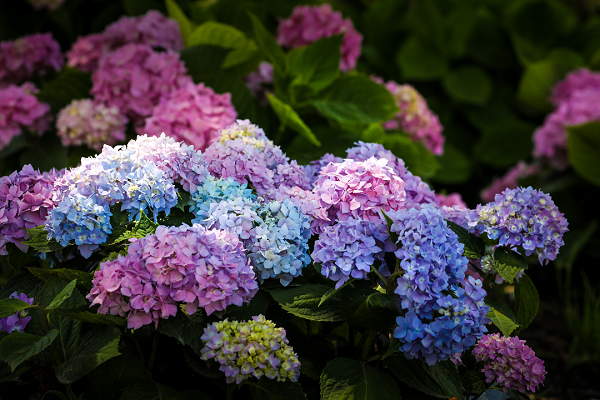Shanghai wildlife park makes sure their African guests kept healthy and warm over the icy winter months. Xu Junqian reports.
As the wind sweeps across the plains of the Yangtze River Delta, swirling up fallen leaves and stirring debate about whether central heating is necessary in China's southern cities, about 500 inhabitants of Shanghai Wild Animal Park have already been promised a cosy winter.
Keepers have been busy making sure the more than 30 species from Africa have all the creature comforts for the cold months ahead.
|
African chimpanzees with their keeper in Shanghai Wild Animal Park. Photos by Gao Erqiang / China Daily |
|
Animals from Africa have a cosy winter in Shanghai Wild Animal Park. From above: giraffes, a hippopotamus and fennecs. |


With 24-hour air-conditioning in almost every enclosure, different species are afforded special care according to their needs. For animals, such as giraffes, who only stay indoors at night to sleep, the sleety winter that could last as long as four months in Shanghai is always tough.
Luckily, the tallest residents, who have been lodging at the city's only wildlife zoo since it opened in 1995, have almost grown immune to the low temperatures and dampness.
"We started by letting them move around outside for two hours on a sunny day, and then three, four hours, etc," says Shen Hao, the director of herbivore management for the African safari section.
"As they grow accustomed to the environment, they also have some outdoor sports to keep them fit and warm - stretching their necks, doing a few kicks and the like."
The 35-year-old zookeeper has been looking after the dozen giraffes, together with 100 other animals, since they arrived. Every day he and his colleagues take at least four tours in their camouflaged van around the 21-hectare African section, the largest one in the park, to make sure "everyone is fine".
"The first few days of every winter are usually the most difficult," Shen says.
Of course, the animals do not complain when they have a cold or fever, but veteran caretakers like Shen can tell from their behavior or droppings when something is wrong.
The giraffes' neighbors, the hippos, on the other hand, are much tougher, making them easier to take care of, although they only moved into the park, in Pudong New Area, about 35 kilometers from the city center, a couple of months ago.
All the three newbies, Jixiang, Shasha and Sibao, ask for is a hot spring with a constant temperature in which to loll away most of the day.
But the hot pool is just the wellness center of the 2,200-square-meter hippo "mansion", costing millions of yuan, to "prevent the three youngsters from becoming homesick". The home away from home features familiar grassland and palm tree forests, dotted with rocks resembling granite kopjes.
The custom of a tonic in winter, believed by many Chinese to provide energy to fight a tiger with bare hands, is also given to most of the animals in the wildlife park, including the tiger.
Vegetarians such as rhinoceros, oryx and zebra are fed extra portions of highly nutrient alfalfa to enable them to store more energy. Supplements of vitamins and trace elements are also added to their staple diets.
Chimpanzees and monkeys are given more in the way of snacks, such as eggs, peanuts and milk, while chefs prepare lamb and beef platters for the carnivores - the lions and leopards.
"They may not necessarily eat more, but they are equipped with more nutrition and energy to get through the hard season," says Ni Li, spokeswoman for the park. Three tons of food is consumed daily by the thousands of animals in the park.
To create an environment that is more in keeping with their wild habitats, keepers at the park have started an environmental enrichment strategy, used by many zoos around the world in recent years to allow animals to "demonstrate their species-typical behavior".
Feeding-enrichment, the most widely used form, helps animals get through the season.
"It's like playing hide and seek," says Zhang Weiping, the keeper of fennec foxes, migrants from the deserts of northern Africa. Zhang has been working for months designing different ways of presenting food, to push the newcomers to investigate, dig, and finally enjoy their tasty discoveries.
Methods developed by Zhang and other keepers at the park include hiding food high in trees for agile climbers, burying it deep in caves for persevering miners, and spreading it around the grounds for careful observers.
"The main purpose is to bring out their natural instincts when looking for food, and, ideally, to get them up doing more exercise in winter, instead of being a couch potato in an air-conditioned room," Zhang says.
But not all creatures find the winter months unbearable. Some with the wherewithal to cope with cold conditions may even revel in a more active lifestyle, such as Siberian tigers, native to areas with temperatures as low as -30 C. Their keeper says the big cats seem to have been enchanted by the rare snow and ice last winter in Shanghai.
Be that as it may, the keepers generally agree that spring is the most joyful season for the animals, wherever they come from. They claim they can tell from the creatures' behavior.
"Spring is the season that nature is revivified and everything comes into itself," one of the keepers says, quoting a Chinese saying.
Contact the writer at xujun-qian@chinadaily.com.cn.
(China Daily 11/27/2013 page20)


